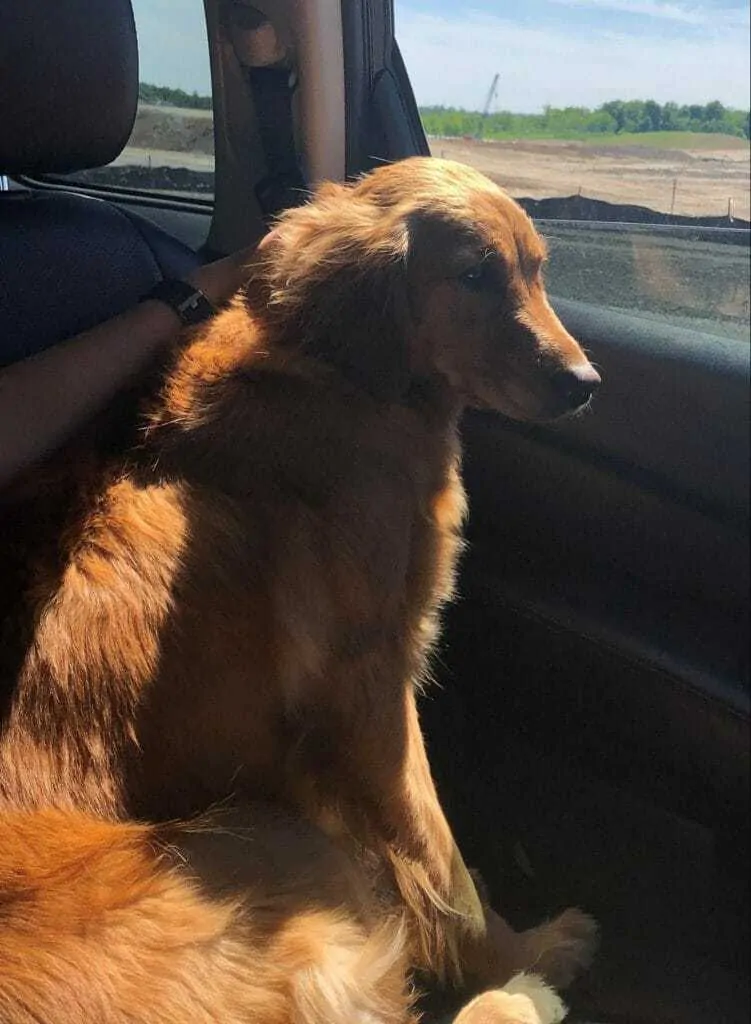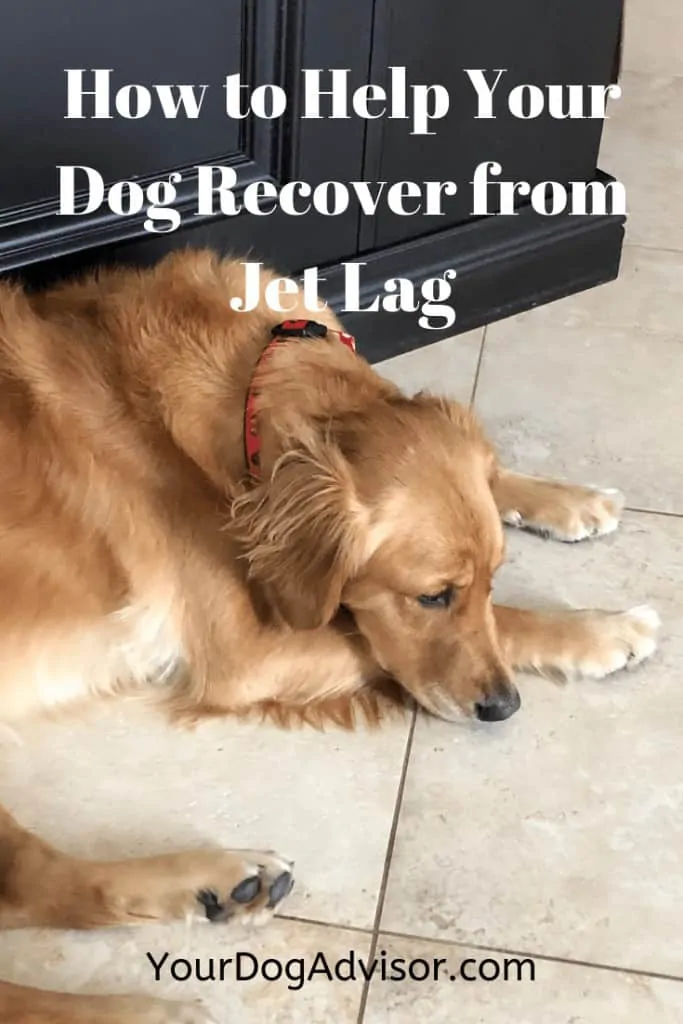Dog boarding facilities are extremely popular these days, allowing pet owners to travel – whether for quick weekends or extended holidays – knowing that their pets are being well-cared for while they’re away. But many pet owners also like to take their dogs with them on their travels when feasible.
Nowadays, in fact, more and more pet owners are traveling with their furry friends. Whether the pets are kept in the ‘hold’ section of the plane (usually close to the cargo area, though it’s heated and made comfortable) or travel side-by-side with the owners as a service dog, you’ll be more likely to see pets on planes these days more than ever before.
But just like humans, pets can suffer from jet lag, too. And as uncomfortable as jet lag may be for your pooch, there are some things that you may be able to do to help him recover more quickly and get back that pep and energy you’re so used to seeing in your dog.
Contents
What is Jet Lag?
Jet lag is a temporary issue that can cause fatigue and sleep problems when you quickly travel across time zones. It happens because the body’s clock is still on your original time zone, but when you are forced to switch to a new time zone within a span of a few hours, it can be tough to catch up as quickly.
While jet lag is usually focused on humans who travel, dogs can also suffer from it as well. And although dogs don’t seem to be as affected as humans seem to be, they still got through some of the same types of things that humans go through after a long flight.
Signs of Jet Lag in Your Dog
As a dog owner, you know how much your dog sleeps, especially when he’s bored or is at home alone when you’re out. It’s what they do. Dogs sleep a lot, and have the time to do so. Considering how much they sleep, why would jet lag affect them much at all?
While your pooch might get a decent number of hours of sleep every day, he still has a specific circadian rhythm that still needs to be followed. Circadian rhythms are changes that follow daily cycles and respond to light and dark. That’s why it’s natural for us to sleep at night when it’s dark out and stay awake when it’s light.
Your dog may be overly tired and even show some signs of anxiety of stress after traveling on a plane for several hours.
But when this circadian rhythm is thrown off – which is often the case when traveling – jet lag can set in, even in your dog. So, how can you tell if your dog is battling jet lag after a flight? Basically, if your dog is overly sleepy and not even interested in eating or doing much at all, jet lag has likely set in.
It’s not the most pleasant experience, and you’ll probably want to do what you can to make your dog feel up to his perky self in no time. Here are some things you can do to help offset jet lag in your dog.
Change Up His Routine Before You Leave
Keep in mind exactly where you’re going and what the timezone is there. For instance, if you’re traveling somewhere that’s three hours ahead of where you live right now, try changing your dog’s routine to suit that timezone about a week before you head out on your travels, and do so slowly and gradually. So, that may include changing your dog’s nap times, feeding times, and even when you take him out for a walk.
Your dog will eventually get used to the new schedule and will have an easier time adjusting to the new time zone when you get there. Of course, the same adjustments will need to be made when you return.
Make Him as Comfortable as Possible
Be sure to have all your dog’s favorite bedding and toys on hand during the trip. This can help ease any stress he may experience as a result of traveling, especially if he’ll be on his own in a crate on the plane. You’ll also want to supply a non-spill container with water to make sure he doesn’t get thirsty along the way.
Right before you take off, give your dog a chance to relieve himself so he’s not traveling with a full bladder. At the same time, don’t feed him right before the flight, as this will leave him with a full stomach during the journey.
Giving your dog some time to rest, exposing him to sunlight, and keeping the environment as familiar as possible can help your dog overcome jet lag much faster.
Instead, feed your dog a few hours before the flight. It’s ok if he’s a little hungry along the way – you can just treat him to something special when you make it to your final destination.
To make his trip more restful, exercise your dog quite a bit before the flight so he’s tired enough to get a comfortable sleep on the trip.
Keep the Environment Familiar
Try to keep things as similar as possible when you’re at your new destination. Changes can be stressful for dogs just as they can be for humans. Make sure to keep the dog food the same, and try to surround your pup with as many familiar things as possible to avoid any possible anxiety from a new environment.
Expose Your Dog to Sunlight
Once you arrive at your destination, give your dog some time to spend basking in the sun to help reduce symptoms of jet lag. Experts recommend getting enough sunlight exposure during the day to help maintain a proper sleep-wake cycle, which can be helpful for your dog.
Letting your dog get in as much sunlight as possible may be a great way to help him rejuvenate. Plus, it’s a great place to take a restful nap!
Things to Consider Before You Put Your Dog on a Plane
As you might suspect, traveling with your furry companion on a plane requires certain considerations to be made. If you’ve decided to take your dog with you on a plane, be sure to get familiar with the airline’s pet policies.
Obviously, the first thing you’re going to want to find out is whether or not your dog will be allowed to be transported on the flight in the first place. Clearly, if the airline’s pet policies state that no pets are allowed, it’s time to look elsewhere.
While this might sound like a no-brainer, it’s super important to find this out before you book your ticket.
If the airline allows pets on the plane, find out if they allow them in the cabin or if they must travel in the holding area at the rear of the plane close to where the cargo is. Find out what the specific restrictions are, regardless of where your pet will end up on the plane.
Even if you have a service dog, some airlines might still give you a hard time allowing him in the cabin with you, so be sure to find out what all the regulations and restrictions are with the airline you’ve chosen.
Otherwise, smaller pets may be able to travel in the cabin with you as long as they’re small enough. More specifically, they’ll need to be small enough to be able to fit in a compliant carrier that can be stowed under your seat.
If money is no object, there is also the option to fly with a private charter, which will allow you to bring your pet in the cabin with you, no matter how large your dog is or whether or not he’s a service animal.
Regardless, you’d be well-advised to find out what all the restrictions and rules are when it comes to bringing your dog abroad with you on your next flight.
Final Thoughts
Your pet might not show signs of jet lag as much you might, but traveling – especially far distances – can cause jet lag to set in and all the uncomfortable symptoms that come with it. Of course, if your dog is tired after all that traveling, let him rest. But aside from that, consider implementing any one of the above-mentioned tips to help your beloved pet overcome jet lag as quickly as possible.

Jen Jones is a professional dog trainer and behavior specialist with more than 25 years of experience. As the founder of ‘Your Dog Advisor’ and the ‘Canine Connection’ rehabilitation center, she applies a holistic, empathetic approach, aiming to address root causes rather than merely treating symptoms.
Well known for her intuitive and compassionate approach, Jen adopts scientifically-proven, reward-based methods, encouraging positive reinforcement over punishment. Jen specializes in obedience training, behavior modification, and puppy socialization. Her innovative methods, particularly in addressing anxiety and aggression issues, have been widely recognized. Jen has worked with many of the world’s leading dog behaviorists and in her free time volunteers with local animal shelters and rescue groups.



